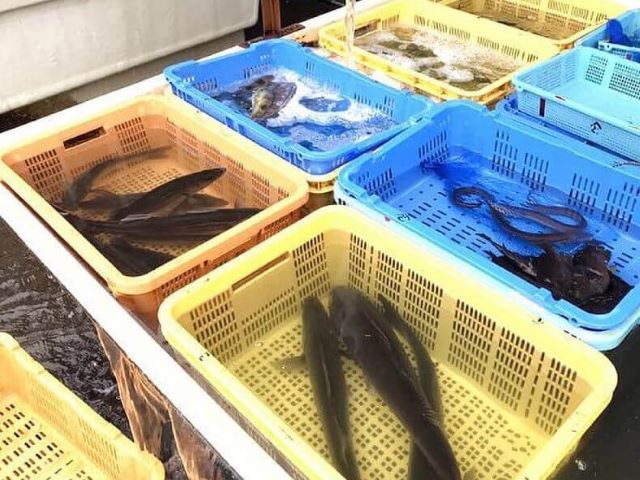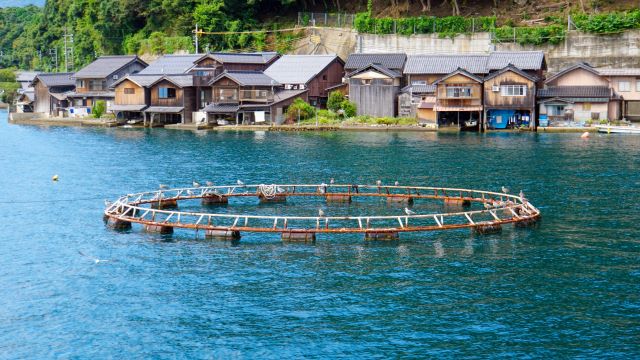
The answer to this question is obvious.
First of all, the most common argument goes something like this.
Some say that farm-raised fish are fatty, but the image of natural fish being superior has simply taken hold. Others say that farm-raised fish are raised in small fish ponds, so they are less active and less chewy, or that feeding them formula feed harms the taste and aroma of their meat. Well, all opinions can be said to be right or wrong.
It could be for the following reasons. It does not touch on the quality as well as the quantity of fat. Not all fish farms are small, and there are far more people who prefer soft flesh to chewy flesh. And we know that feed has a big impact, so formula feed has been greatly improved. It is all about the so-called superficial argument.
And as you probably know, there are fish of the same season, same species, and same freshness that are natural but separately not so tasty. It can be said that the natural one is the one that is more hit or miss.
And, as a wild guess, I would say that most people only know what farm-raised fish tastes like. In Japan, about 60% of Japanese amberjack (Buri), 80% of Red seabream (Tai), and 99% of Japanese eel (Unagi) are farm-raised. In other words, most Japanese likely eat farmed fish for these three species. The situation is similar around the world. Farmed salmon surpassed the catch of wild salmon in 1996, and currently accounts for more than 70% of total production.
This is the prerequisite for the answer so far. We then look impartially at the facts alone to come up with an answer.

It is not difficult for a person with common sense to compare farmed hamachi and wild buri and recognize them. However, for those who have only eaten Hamachi and usually find it tasty, it may take some time to come to feel that Buri is tasty because their brain has a sense that such food is tasty. Modern people who find foods with amino acids and artificial sweeteners tasty command their brains to tell them that they are not tasty without them. When we become accustomed to foods that mask the original taste, we lose sight of the original taste. This is the true nature of convenient food. Therefore, when a fair comparison of natural Buri and cultured Hamachi Sashimi is conducted, more than 80% of people say that cultured Hamachi tastes better.
Fish have different flavors and aromas depending on where they are caught, and once you understand this, you can narrow it down considerably to the place of origin. The factors are the marine environment in which they live and the type of food they have been raised on. Natural fish can choose the food they eat, and those raised on such food have their original flavor. Fish raised in aquaculture are fed a diet that suits their needs because the emphasis is on economics. Because farm-raised fish cannot eat the food they prefer, they can’t develop their original flavors.
Nowadays, farm-raised eels dominate the eel market, and there is not a mere shadow of the natural product to be seen. Whenever we eat wild-caught eel, we always feel that farm-raised eel does not have the smell of earth and mud from the fat condensed in the skin and meat like wild-caught eel. Whether you like this smell or not, it is the original flavor of the eel. As for the quality of fat, farm-raised eel is not so bad when it is hot, but when it cools down, it feels heavy. Compared with farm-raised eel, natural eel is fatty but gives the impression of being light and smooth, which is why it has been called a specialty.
The iodine value is a number that indicates the degree of saturation or unsaturation of fat and oil. The higher this number is, the higher the content of unsaturated fatty acids and the worse the aftertaste tends to be. For example, farm-raised eel has an iodine value of 150, while wild eel has an iodine value of about 80, and contains almost no unsaturated fatty acids. Unsaturated fatty acids are abundant in Pacific saury (Sanma), Japanese sardine (Iwashi), Mackerel (Saba), etc. In short, these fish and farm-raised fish that eat food made from highly unsaturated acids will all have highly unsaturated acidic constitutions and will have a bad aftertaste. Moreover, if the fat is too strong, the fish will not even develop the aroma of the individual fish. This is one aspect of farmed fish.
Red seabream (Tai) is also available in both wild and cultured forms, but the amino acid composition and flavor compounds in both types do not vary much. Why, then, is there such a difference in taste? The only reason is the difference in flavor. The trace amount of aromatic substances in the fat of sea bream determines the original flavor of the fish. As mentioned above, farm-raised Red seabream does not have the same flavor. The question is whether the aroma is good for us or not. Of course, everyone has his or her taste in aroma. But that is where the value of the food is born. The top chefs are very particular about aroma, and they all use natural ones.
Finally, can you imagine what the results would be if you ate farmed Atlantic salmon and wild Atlantic salmon as sashimi? Probably, the farmed salmon would be superior because of its tender meat, appetizing color, and fat content (we could not find such experimental data, so this is speculation). However, what would be the result of making Nigiri sushi? The noble aroma that nature possesses is irreplaceable. In sushi, where the main focus is on enjoying the aroma, the difference is obvious.
The difference between natural and farmed fish is obvious, as the best sushi chefs never use farmed fish. The exception to this is when the fish is raised in an almost natural environment, without artificial food, so that it simply cannot escape.
All in all, the conclusion is that wild fish tastes better.
Related contents:
‘We won’t serve it’: leading UK chefs join campaign to cast farmed salmon off menu